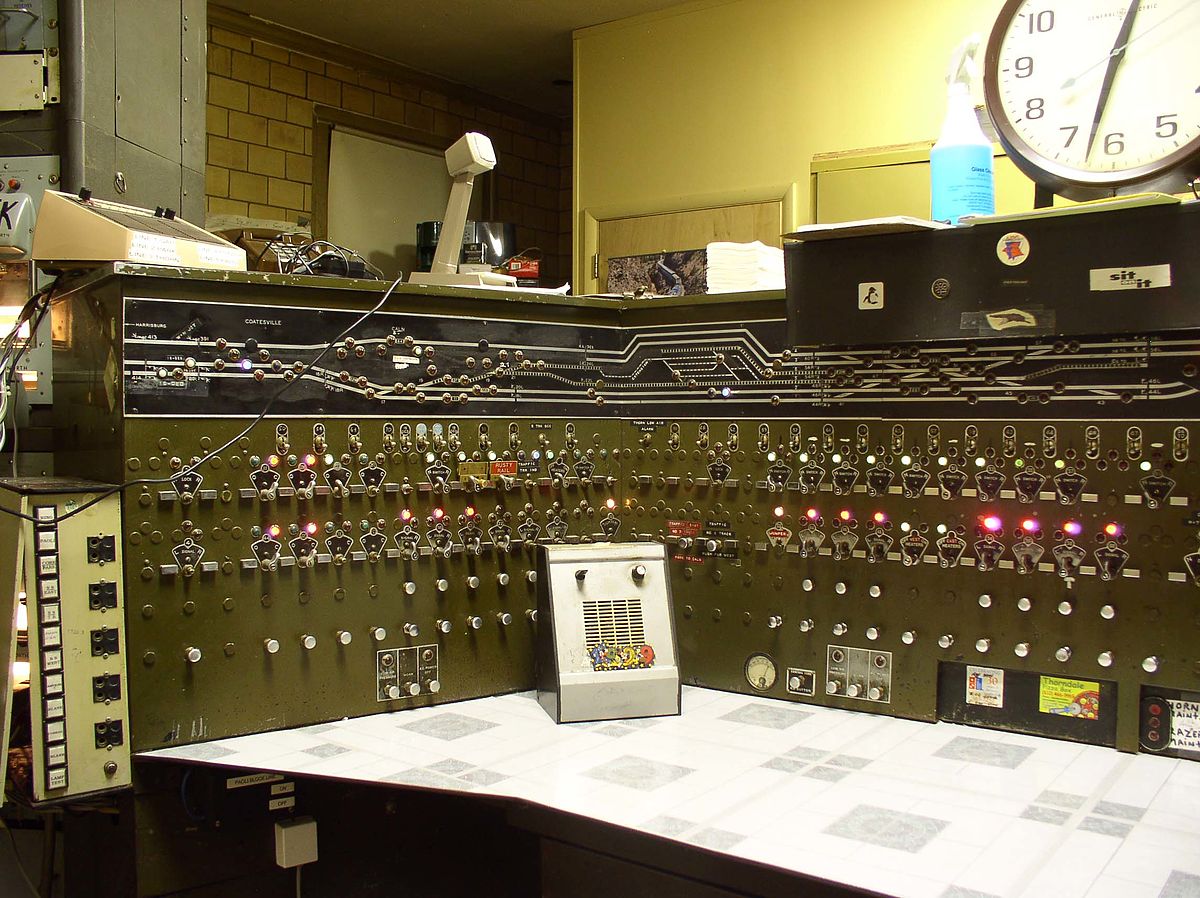CTC used (at least initially) a notably previous-generation communication system, with a 2-wire system on a lineside pole route. You can still see this in the USA, with connecting overhead wires from an adjacent pole to each signal or point machine. The operation was notably slow, with an extremely low what would now be called Baud Rate on the wires (but brilliant for its time, from the 1920s). The operator set up the route, then pushed a switch and it took sometimes many seconds to send all the pulses out on the wires that operated everything. There were just a pair of wires, each signal or point picked up its own coded pulses. It was proprietary to General Railway Signal Corp ("GRS"), but their principal competitor, Union Switch & Signal, devised a comparable system that bypassed the GRS patents.
Compared to a UK "power box" it was notably smaller scale at the dispatcher end, run from a console that one dispatcher sat at, often running 100 miles of line from a back room of some convenient station building. Nevertheless the line display on the console looks very familiar. Just on free-standing legs that the technician (called a "maintainer" in the USA) can walk behind.
CTC doesn't do everything on a line, just signals and some power points, typically at passing loops. There are other points, into less-used sidings, which are still manual on the ground, but wired in to the CTC so when they are unlocked by the train crew they set the signals to red while they perform shunting moves etc.
I believe there was a proposal to implement it on the four routes that radiated in the early 1960s from Market Weighton, in Yorkshire, to York, Selby, Driffield and Beverley. It was quite worked up as a scheme and featured in magazine articles of the time. By the sound of it, it would have used imported GRS equipment as a prototype. Then the Beeching Report came along and the whole lot was proposed for closure.
It was also very extensively used on UK "Colonial" routes overseas, invariably single track, in Africa etc. The Rhodesian and East African railways made much use of it.
Described here :

en.wikipedia.org


